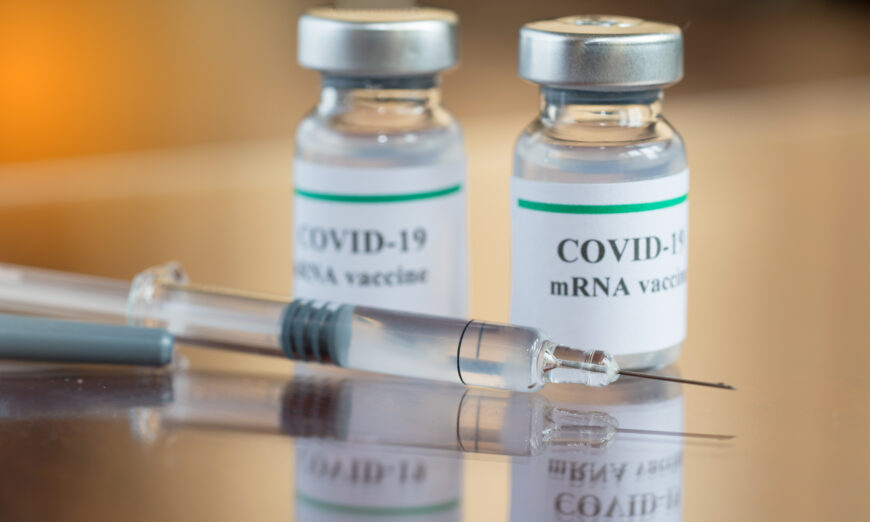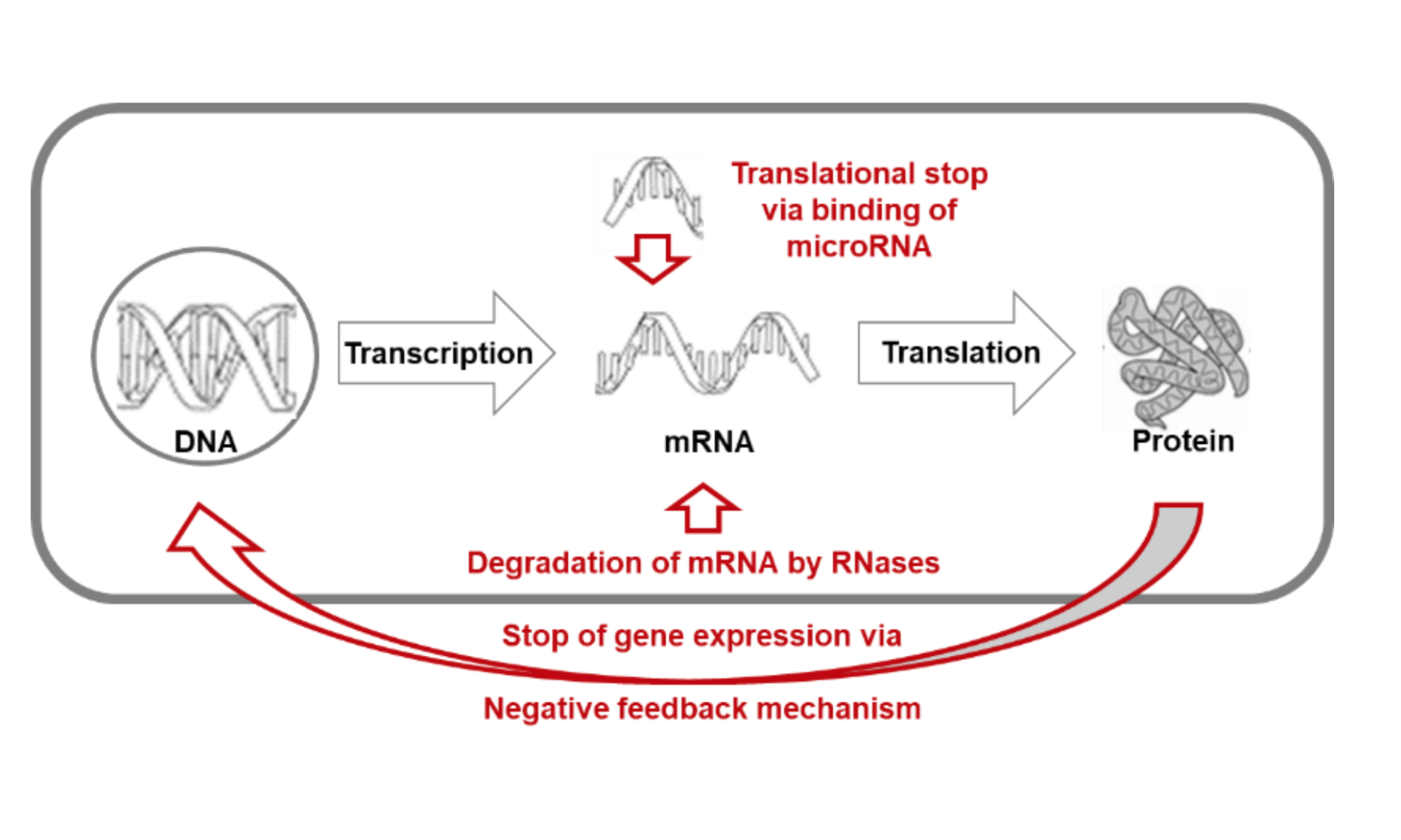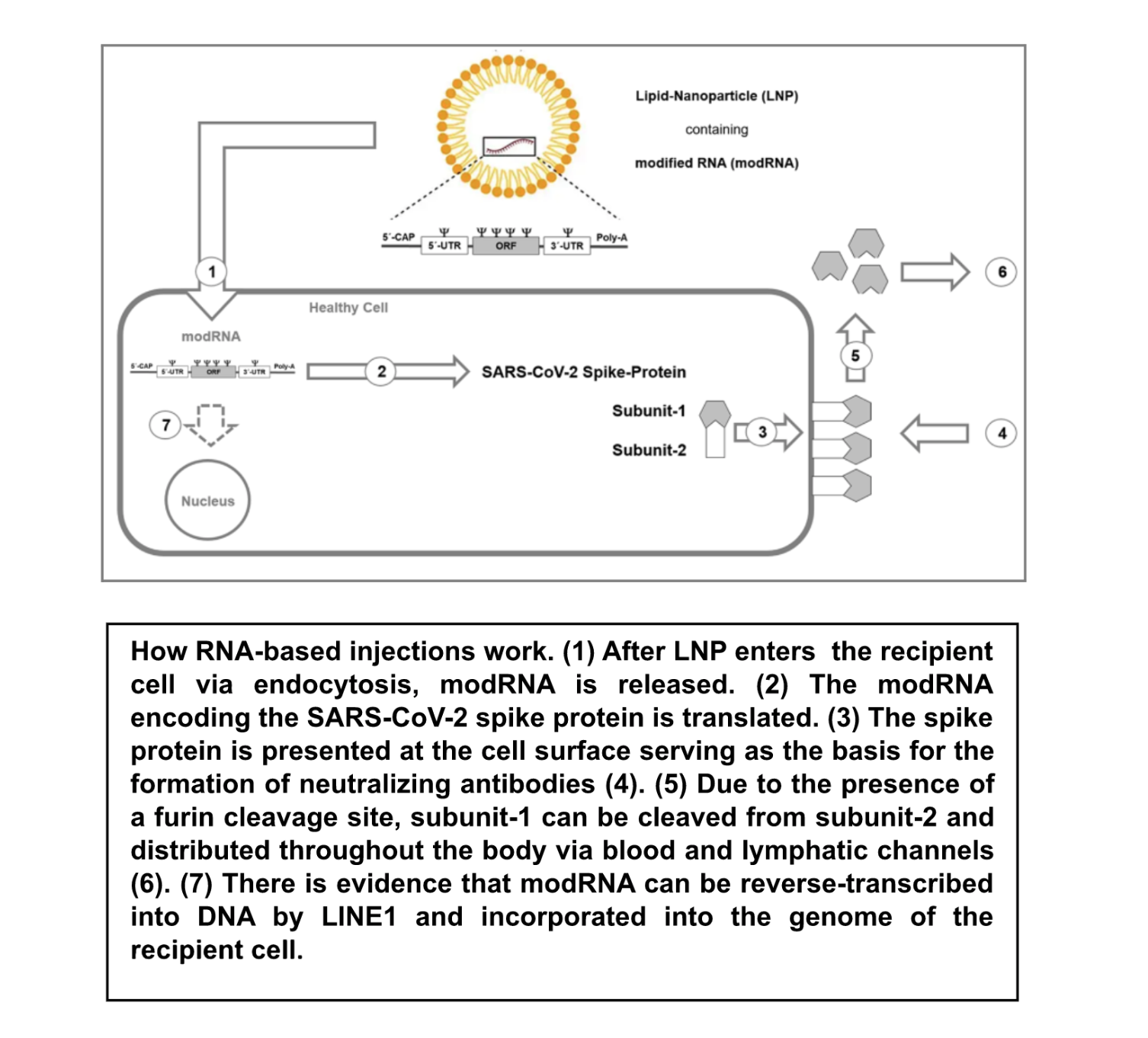Turns out that we cannot use natural mRNA at all. so whatever is used must be genetically modified and will be alien to our human biology.
The whole scheme is turning into a scientific nightmare orchestrated by folks whose scientific credentials are surely rubbished and should as a matter of course, be rubbished.
All this is unimaginable to someone who has always trespected scince and how it was implimented. What happened???
RNA-Based Vaccine Technology: The Trojan Horse Did Not Contain mRNA
It Contains modRNA That Genetically Manipulates Healthy Cells
Apr 21 2023
https://www.theepochtimes.com/health/rna-based-vaccine-technology-the-trojan-horse-did-not-contain-mrna_5195804.html?
A few years ago, the term “mRNA” was primarily confined to scientific circles and research papers. Then, the use of messenger RNA seemed promising: It would teach cells to create a protein that would initiate an immune response against a specific pathogen.
Today, many more of us have heard of mRNA, as both the Pfizer-BioNTech and Moderna COVID-19 vaccines use messenger ribonucleic acid, or mRNA, as the active ingredient. At least, that’s what we’ve been told.
In fact, RNA-based vaccine technology utilizes modified RNA (“modRNA”), not mRNA. This applies to the COVID-19 vaccines and all vaccines currently in the research and development stages. Because mRNA is so fragile that the human immune system will destroy it within a few minutes, mRNA cannot be effective on its own. Therefore, the current technology was made possible only after stabilizing mRNA; the result is modified RNA.
Furthermore, modified RNA-based “vaccines” are not vaccines but gene-based injections that force healthy cells to produce a viral protein. In this article, we will look at the uses and dangers of modRNA.
Natural Infection and Conventional Vaccination
When you are infected naturally by a virus or have received a conventional vaccine, your immune system identifies virus-specific antigens from active or inactivated virus particles, respectively.
The two main types of immune cells, T and B cells, behave differently. T cells identify infected cells and initiate apoptosis (the cell-killing process), while B cells produce antibodies that bind to the virus and thus prevent infection of other cells.
There are various “proteins”—called antigens—on the surface of each virus. Your immune system can memorize more than one of them. When the virus mutates and some proteins change, your immune system can still recognize and kill them. This is referred to as cross-immunity.
Particularly in the case of respiratory disease, most pathogens are already prevented by the first natural barrier, the mucous membrane. This barrier, however, is bypassed when an intramuscular injection (such as the COVID-19 shot) is administered.
T and B cells behave differently depending on whether the host is infected naturally, with a conventional vaccine, or with an RNA-based injection. (Courtesy of Klaus Steger)
Injections of modRNA Result in the Genetic Manipulation of Healthy Cells
To protect against destruction by the immune system, modified RNA (modRNA) is packaged in lipid nanoparticles (LNPs), which, due to their small size and synthetic optimization, can easily overcome biological barriers and even reach vital cells in the heart and brain.
According to the concept of RNA-based injections, the antigen (here, the spike protein of SARS-CoV-2) is synthesized by our cells and presented at the cell surfaces, where it serves as a target for the generation of neutralizing antibodies.
However, this mechanism is highly problematic.
On the one hand, in addition to the desired neutralizing antibodies, non-neutralizing antibodies may be generated, resulting in antibody-dependent enhancement (ADE). This process allows endocytosis of virus-antibody-complexes into the host’s immune cells (i.e., macrophages), causing a weakening of the immune system. Put simply, non-neutralizing antibodies represent devils in disguise, making a person’s body more susceptible to illness related to follow-up and booster injections.
On the other hand, the viral spike protein, produced by the body’s cells and presented at the cell surfaces, acts as a label, which transforms the recipient cell from friend to foe and causes the immune system to initiate the destruction of that cell by apoptosis.
Furthermore, since COVID-19 RNA-based shots deliver only the genetic information for the spike protein of SARS-CoV-2, based on the Wuhan sequence, protection will be inferior to natural infection, which is known to establish cross-immunity. It does so by generating additional antibodies against another protein in the SARS-CoV-2 virus, the nucleocapsid protein. Given the virus variants—Alpha, Beta, Gamma, Delta, and so on—the original Wuhan sequence no longer exists. That means that antibodies produced by our immune system (based on an “old” virus sequence) are ineffective against the sequences of the new variants. This is yet another reason that RNA-based vaccine technology is and will always be inferior to natural infection and conventional vaccines, as viruses mutate far more rapidly than the pharmaceutical industry can produce new, adapted vaccines.
The Dangers of Redundant Proteins
Proteins represent our body’s building material and our metabolism’s central molecules.
For a functional metabolism, only essential proteins must be present in a distinct cell at a specific time. Proteins that are not required must be absent, as they will disrupt or even block the smooth running of the cell metabolism.
Proteins, or mRNAs in healthy cells, can be compared to orchestra musicians: Harmony depends on various players pausing, not on every musician playing without stopping. Likewise, the absence of a specific protein/mRNA plays an essential role in metabolism.
As modRNAs are developed for longevity and maximal efficiency and (via lipid nanoparticles acting as natural exosomes) have access to all cells, they contradict the nature of mRNAs, which are cell-specific and short-lived. In our orchestra analogy, it would be like giving one musician a bass drum and instructing him to bang it from start to end, completely ignoring the piece of music being played.
The COVID-19 mRNA Vaccine Is Made With modRNA
Messenger RNA carries the genetic information for the blueprint of one specific protein. The human body has different mechanisms to prevent mRNA from being translated and to support the degradation of mRNA that is no longer needed.
Messenger RNA carries the genetic information for the blueprint of one specific protein. (Courtesy of Klaus Steger)
A recent study reported that the expected lifetime of mRNA is not hours to days, as previously assumed, but only minutes. However, the lifespan of modRNA is long.
Therefore, the basic idea of RNA-based injections contradicts the nature of mRNA in all aspects, as modRNA has been optimized for maximum translation efficiency and maximum lifespan. There is no reason that any cell in our body, including vital cells in the heart and brain, should produce as many molecules of a foreign viral protein as possible for as long as possible—which, in addition, transforms this cell into a target to be attacked and destroyed by our immune system.
To ensure mRNA can stay in the recipient’s body longer, the COVID-19 vaccine makers modified the mRNA to use modRNA.
The modRNA: A Trojan Horse That May Be Worse Than the Disease
How RNA-based injections work. (Courtesy of Klaus Steger)
Even though modRNA encodes for the spike protein of SARS-CoV-2, the aim was never to mimic viral RNA, which our immune system would immediately destroy, but to adapt it to the structure of human mRNA.
The “fake” mRNA—modRNA—can have three problems:
1. It Can Increase Errors While Making Spike Proteins
Of note, the synthetic methyl-pseudouridine, which replaces the natural uridine, has been reported to increase the transcriptional error rate, namely one error every 4,000 nucleotides—one error per every synthesized “vaccine” molecule.
2. Active Ingredients Vary Greatly by Different Batches
Another factor of concern is the unusually broad “tolerance level” of the active ingredient. The modRNA concentration ranges from 0.37 mg/ml to a maximum of 0.63 mg/ml (pdf), as shown in the European Medicines Agency (EMA) Assessment Report. Such a variation is highly unusual for a drug.
Furthermore, the vaccine requires only a minimum of 50 percent of modRNA to be present as intact molecules with a complete sequence, which means there can be up to a 3.4-fold variation of the active substance present in different batches.
Since one dose of Comirnaty (Pfizer-BioNTech) represents 0.3 ml containing 30 micrograms of active substance, approximately 13 trillion modRNA molecules will be transferred into the body per injection.
And the third problem is an even more significant concern.
3. This modRNA May Be Incorporated Into the Human Genome
According to the political narrative, mRNA from COVID-19 vaccines does not enter the cell nucleus, where human DNA is located. The narrative also insists that COVID-19 vaccines do not contain reverse transcriptase, thereby entirely precluding reverse transcription of mRNA into DNA with subsequent transport into the nucleus and incorporation into the host genome. Two publications have refuted this.Liguo Zhang and colleagues added the RNA genome of SARS-CoV-2 in the absence of reverse transcriptase to human embryonic kidney (HEK293T) cells. They observed that the cultured cells reverse-transcribed the viral RNA into DNA and integrated this DNA into the cell’s genome. The authors suggested a mechanism mediated by LINE1 (Long Interspersed Nuclear Element-1), which can act as an endogenous reverse transcriptase. As LINE1 accounts for approximately 17 percent of the human genome, it is highly likely that reverse transcription of the administered modRNA is possible.Markus Aldén and colleagues added the Pfizer-BioNTech COVID-19 RNA vaccine (BNT162b2) to human liver (Huh7) cells and observed reverse transcription into DNA in as short a period as six hours. The DNA sequence unique to BNT162b2 was demonstrated within the cultured cells’ genome, confirming the integration of reverse-transcribed modRNA into DNA. In addition, an increased nucleus distribution of LINE1 has been observed, corroborating a LINE1-mediated integration mechanism.
Critically, sperm is known to contain high levels of LINE1 (pdf).
Although earlier findings are based on studies in cell cultures, insertion into the human genome is possible, a fact that has already been impressively proven by evolution, as it is known that up to 8 percent of the human genome does not originate from our ancestors but from retroviruses. As previously shown, reverse transcription with subsequent genome integration is also possible for SARS-CoV-2 as a single-stranded RNA virus using LINE1.
The modRNA and Its Secret Byproducts
The so-called “RNA-based vaccines” from Pfizer-BioNTech and Moderna contain DNA impurities in addition to the active substance modRNA.
As stated in the EMA Assessment Report, “the BNT162b2 [Pfizer vaccine] active substance is manufactured by in vitro transcription using a linear DNA template, produced via plasmid DNA from transformed Escherichia coli cells.” In a very recent study, researchers demonstrated that the DNA contamination in both the Pfizer-BioNTech and Moderna injections averages 9.1 ng/µl mean DNA concentration versus 33.4 ng/µl mean RNA concentration. This means that approximately one-quarter (9.1 / 33.4 x 100 = 27.3 percent) of the nucleic acids in the analyzed vials can be attributed to DNA impurities. At the same time, the active substance modRNA represents the remaining three-quarters.
Plasmids are circular DNA molecules that can replicate by themselves. It is assumed that this is not the case with linearized DNA. Although the proportion of circular, replication-competent DNA plasmids versus linear DNA templates for the in vitro transcription of modRNA is still unknown, the DNA concentration is not only several orders of magnitude over the limit of 330 ng/mg, as specified by the EMA, but also implies that billions of DNA molecules are transferred per shot of the so-called “RNA-based vaccines.”
This has the following two consequences:
Plasmids generally comprise sequences encoding for antibiotic resistance; this is essential for the production process to avoid the reproduction of other bacteria, which did not contain the sequences encoding for the spike protein. In this instance, kanamycin can be exchanged with other bacteria, increasing the risk of developing multiresistant germs.DNA impurities have the potential to incorporate into the recipient cell genome and, in consequence, may cause mutations that are followed by aberrant gene expression. Reverse transcription by LINE1 is no longer a mandatory step for the integration of spike protein-encoding sequences into the genome. Reverse transcription of modRNA into DNA followed by genome integration is the long way. However, an additional short way may exist—namely, direct integration of DNA contaminants. Both sequences (RNA and DNA) encode for the spike protein.
Finally, the process of in vitro transcription will also result in truncated RNA species as product-related impurities, which will result in the synthesis of imperfect spike proteins.
Summary
The administered COVID mRNA vaccine is modRNA, which has been optimized for longevity and translational effectiveness, and contradicts the nature of mRNA.
The modRNA forces perfectly healthy cells to produce a viral protein, transforming these cells from friend to foe. Therefore, RNA-based injections are not vaccines at all but genetic manipulations. This certainly challenges the political narrative of a powerful next generation of vaccines.
Potential negative consequences are still far from being understood. Numerous adverse effects have already become obvious, shifting the cost-benefit ratio of RNA-based vaccine technology for mass application unequivocally to the negative side.




No comments:
Post a Comment